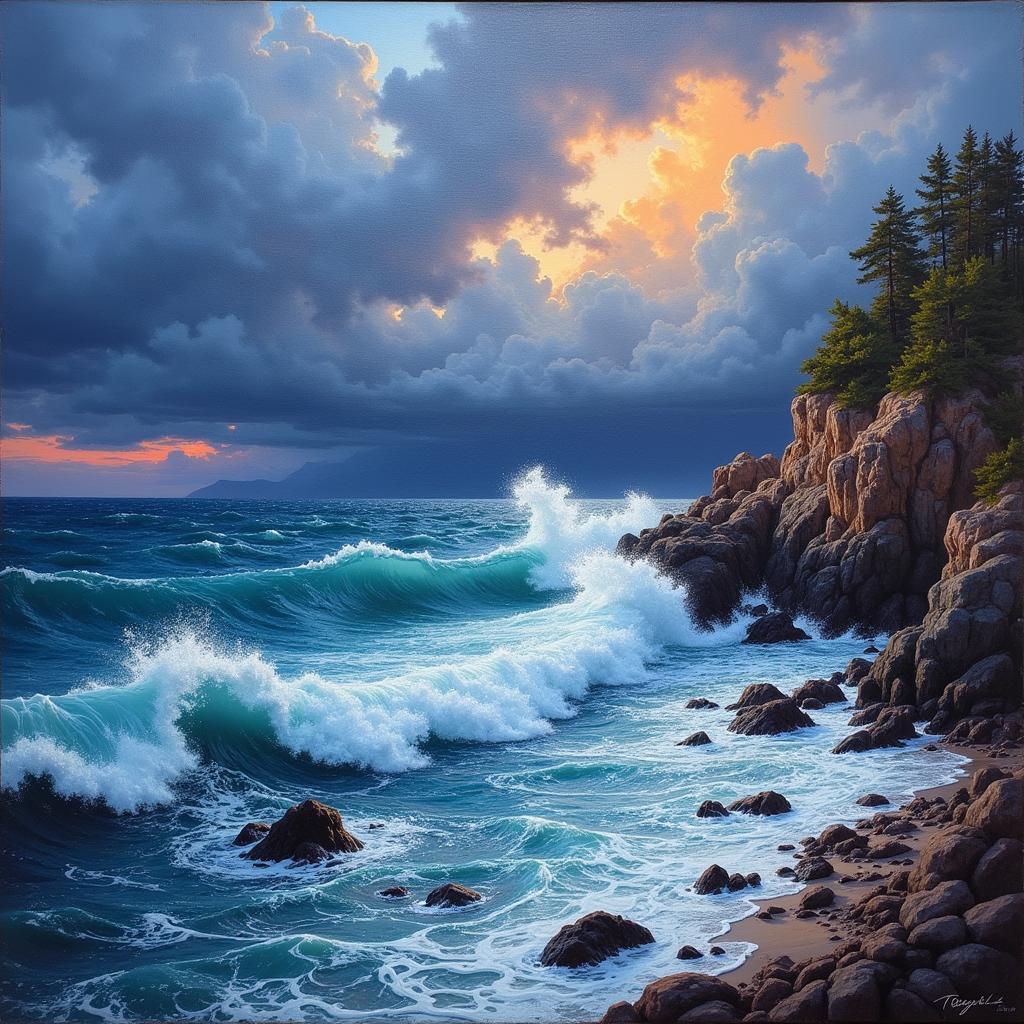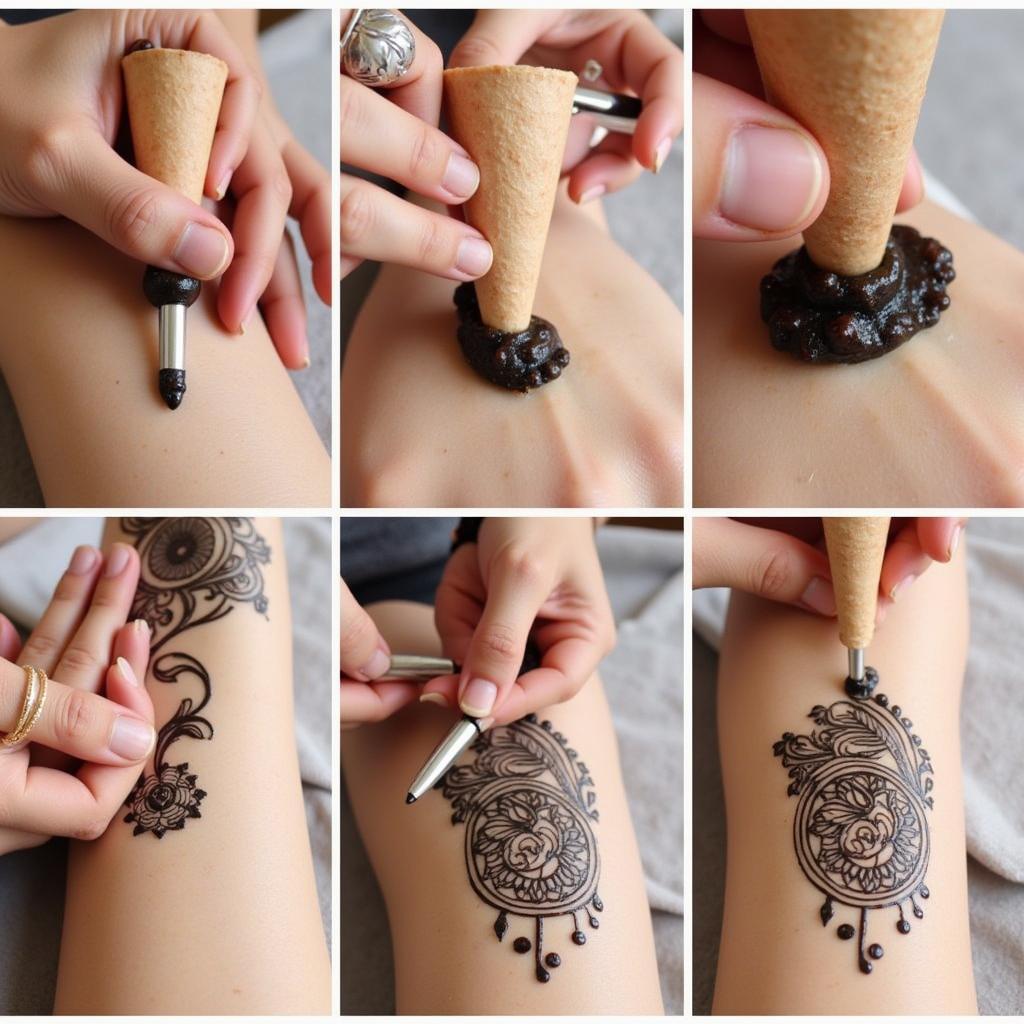Abstract vs. Realism Art: Unveiling the Beauty of Two Worlds
The art world thrives on diversity, offering a spectrum of styles that cater to every taste and perspective. Among these, the debate of abstract vs. realism art has captivated art enthusiasts for decades. These two contrasting styles, while seemingly disparate, offer unique windows into the artist’s mind and the world around us. This exploration delves into the core of these art forms, unveiling their definitions, histories, key characteristics, and notable proponents.
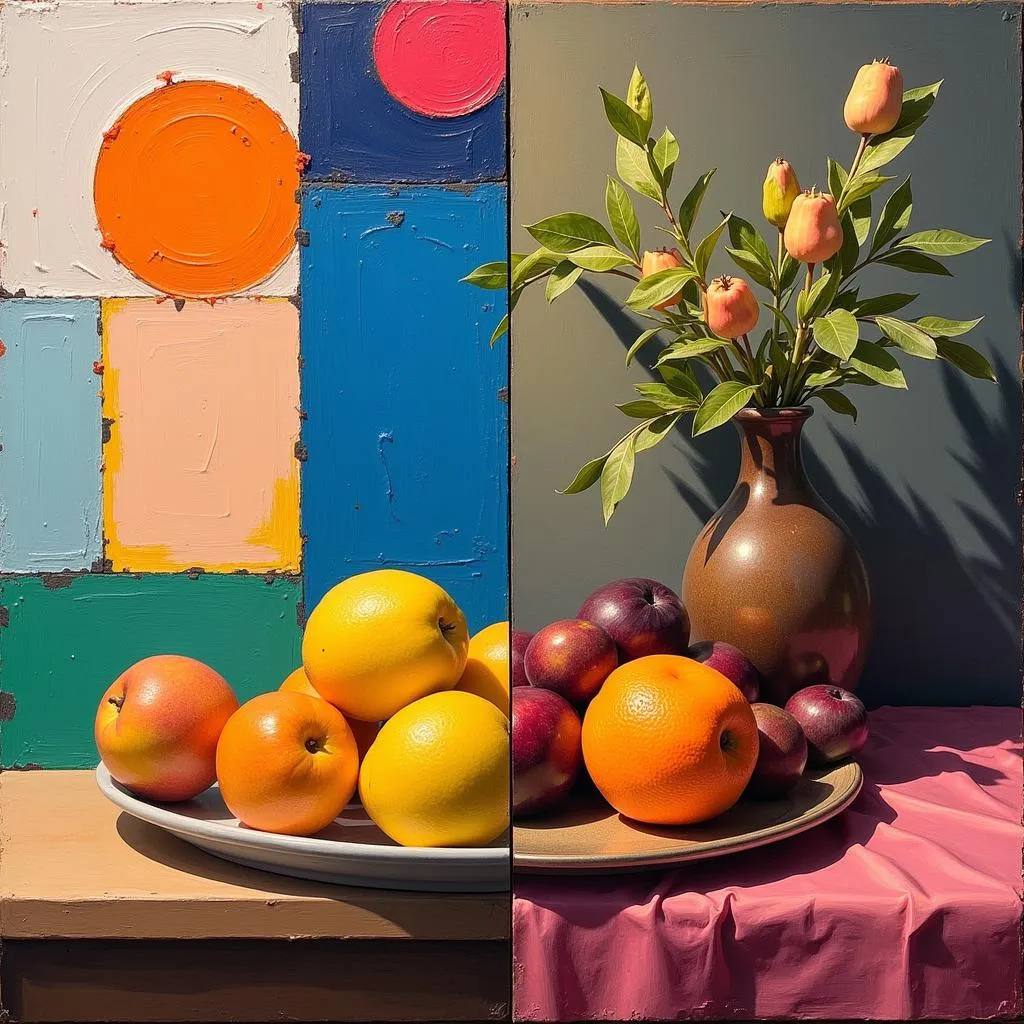 Abstract and Realistic Painting
Abstract and Realistic Painting
Navigating the Realm of Abstraction
Abstract art, in its essence, breaks free from the shackles of literal representation. Instead of mimicking the observable world, it delves into the realm of forms, colors, and textures, utilizing them as the primary subject matter. Think of it as a visual language that speaks directly to our emotions and subconscious. It’s about evoking feelings, sparking interpretations, and leaving room for personal connections.
A Journey Through Time: The Rise of Abstraction
The roots of abstract art can be traced back to the late 19th and early 20th centuries, a time marked by radical shifts in the art world. Artists like Wassily Kandinsky, credited as a pioneer of abstract art, sought to move beyond the limitations of representational art. He believed that colors and forms held inherent spiritual values capable of eliciting profound emotional responses.
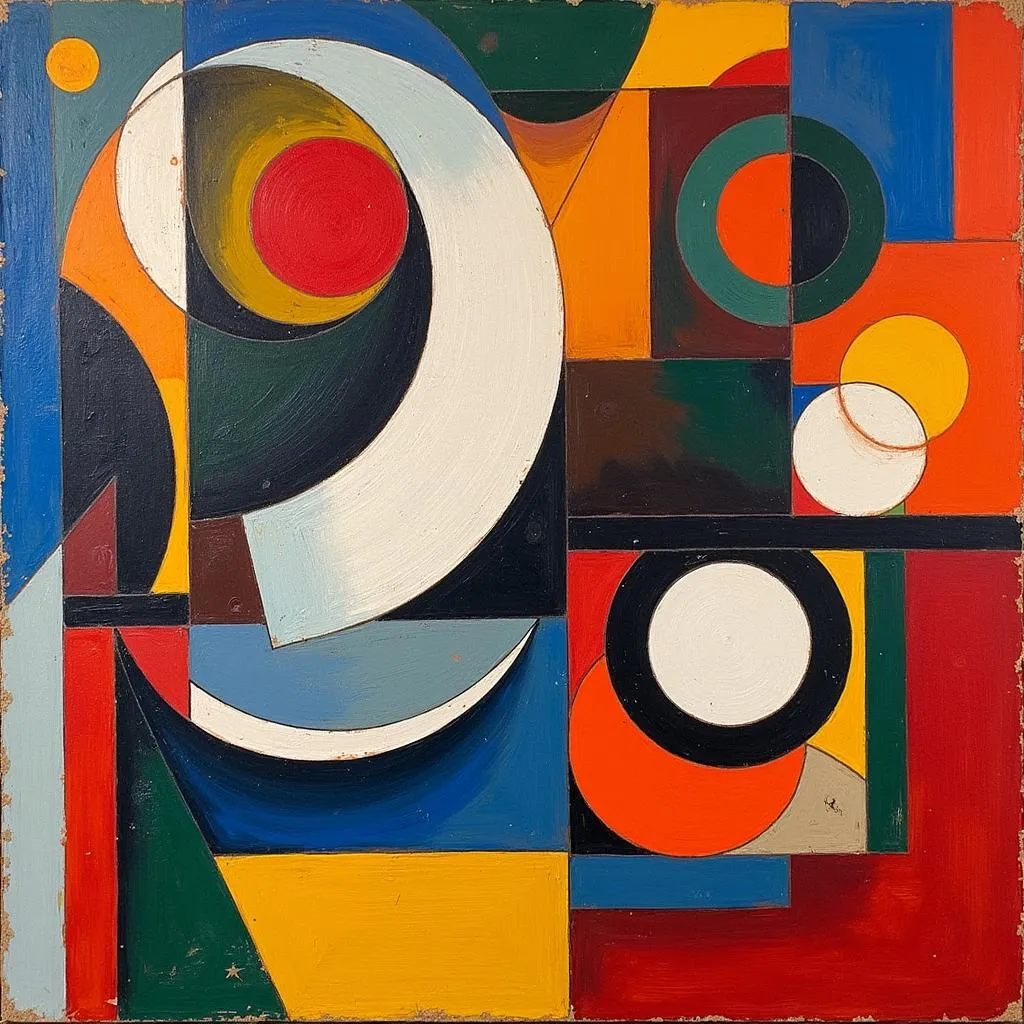 Kandinsky's Composition VIII
Kandinsky's Composition VIII
Hallmarks of Abstract Art:
- Non-Representational: The artwork doesn’t depict recognizable objects or scenes.
- Emphasis on Form and Color: Shapes, lines, and colors take center stage, often used expressively.
- Emotional Impact: The focus shifts from visual accuracy to evoking feelings and ideas.
Stepping into the World of Realism
In contrast to abstraction’s departure from reality, realism in art strives for an accurate and objective depiction of the world. Here, artists painstakingly replicate what they see, meticulously capturing details, textures, and light with astonishing precision. It’s about holding a mirror to reality, unveiling beauty in the mundane, and prompting viewers to see the world with fresh eyes.
A Glimpse into History: The Evolution of Realism
Realism, as an art movement, gained momentum in mid-19th century France as a reaction against the often romanticized and idealized depictions prevalent at the time. Artists like Gustave Courbet championed this new approach, choosing to portray everyday life and the working class with unflinching honesty.
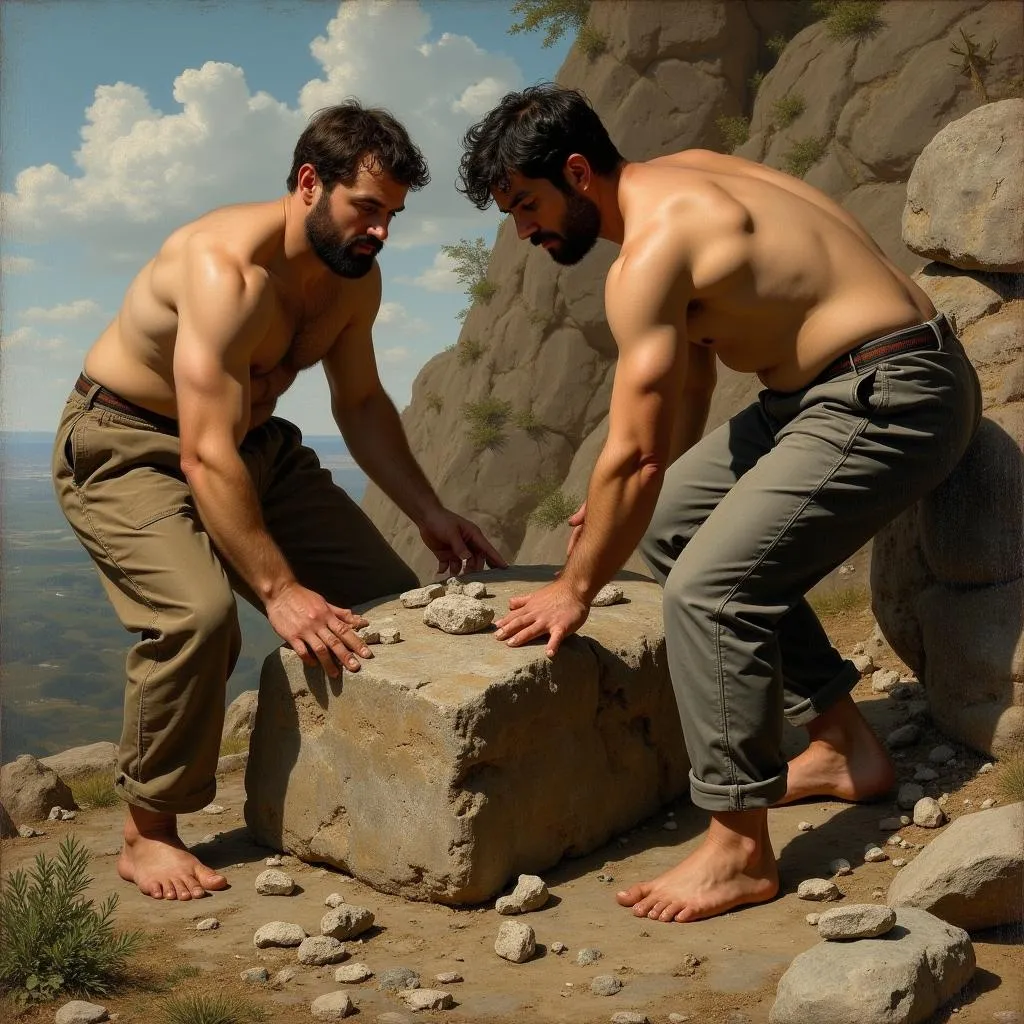 Courbet's The Stone Breakers
Courbet's The Stone Breakers
Defining Features of Realism:
- Accuracy and Detail: The artwork aims for a faithful representation of the subject matter.
- Focus on the Everyday: Realists often find beauty in ordinary scenes and people.
- Objective Approach: Artists strive to depict the world without personal interpretation or embellishment.
Bridging the Gap: Abstract vs. Realism Art
While these styles may seem worlds apart, they share a common thread – the power to move and inspire. They offer different lenses through which to view the world and tap into the depths of human creativity. Ultimately, the choice between abstract and realism art boils down to personal preference.
Conclusion:
The world of art thrives on its diversity, and the contrasting styles of abstract and realism art exemplify this beautifully. While abstract art invites us into a realm of emotions and interpretations, realism grounds us in the tangible beauty of the everyday. Both hold immense value, offering unique avenues for artistic expression and appreciation. Whether your heart leans towards the evocative nature of abstraction or the meticulous detail of realism, the art world welcomes you to explore, appreciate, and discover the style that resonates with your soul.
FAQs
1. Is one art style better than the other?
Both abstract and realism art hold their own unique value and appeal. Neither is inherently “better” – it’s a matter of personal preference.
2. Can art combine elements of both abstract and realism?
Absolutely! Some art forms blend these styles, incorporating elements of both abstraction and realism.
3. What are some famous abstract artists?
Notable abstract artists include Wassily Kandinsky, Piet Mondrian, Jackson Pollock, and Mark Rothko.
4. What are some renowned realist artists?
Famous realist artists include Gustave Courbet, Jean-François Millet, Edgar Degas, and Edward Hopper.
5. Where can I see examples of abstract and realism art?
You can find these art styles in museums, galleries, and online platforms dedicated to art.
Need Help Exploring the World of Art?
Contact us at Phone Number: 02462573573, Email: danteum@gmail.com or visit us at Savico Megamall, 7-9 Đ. Nguyễn Văn Linh, Gia Thụy, Long Biên, Hà Nội 10000, Việt Nam. Our dedicated team is available 24/7 to assist you.

